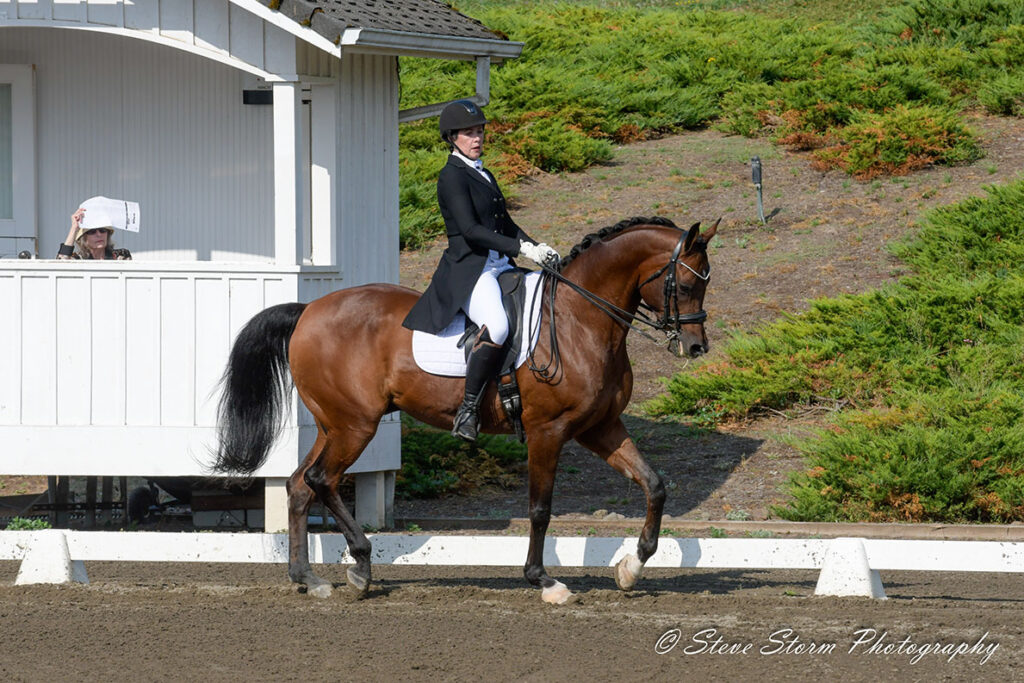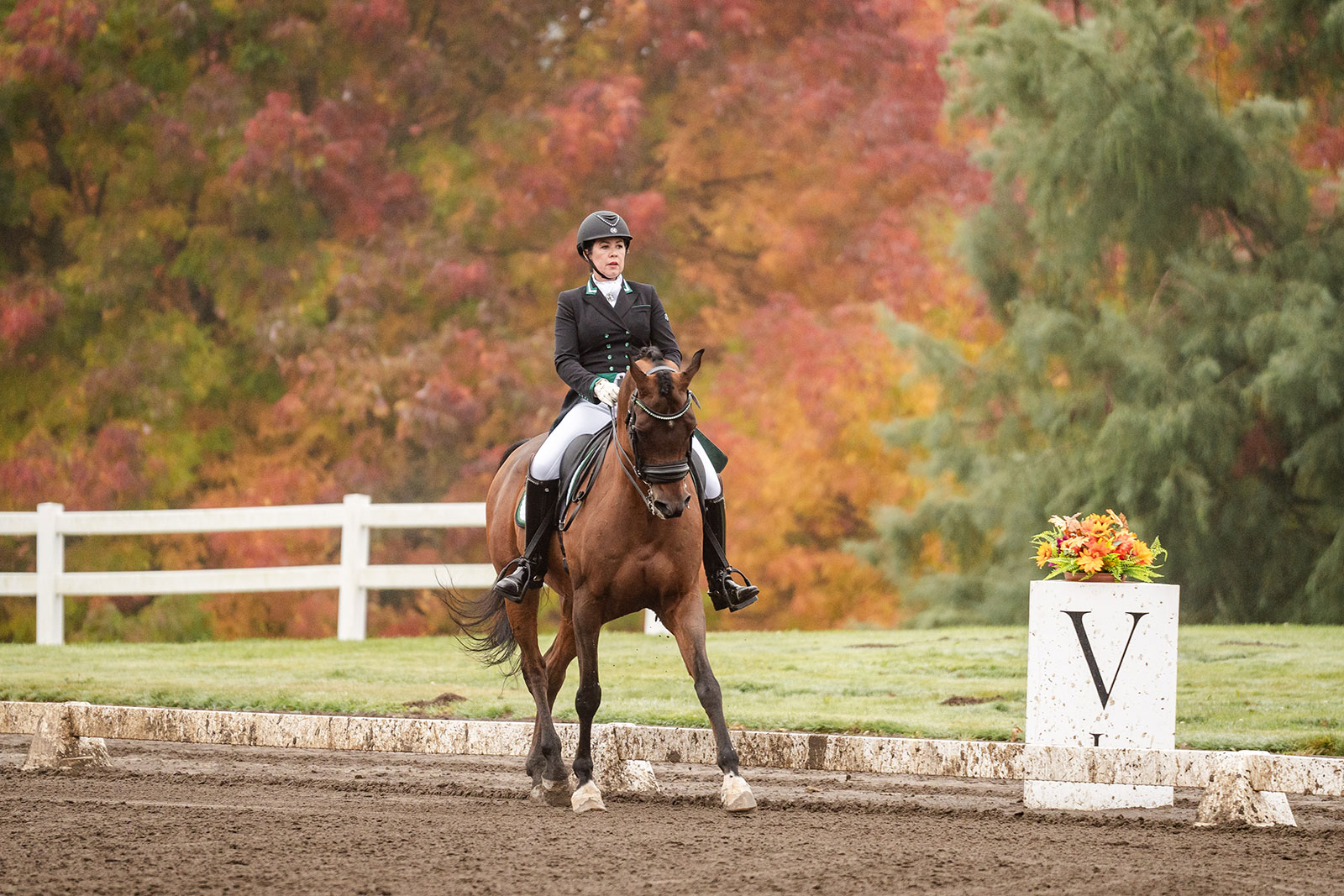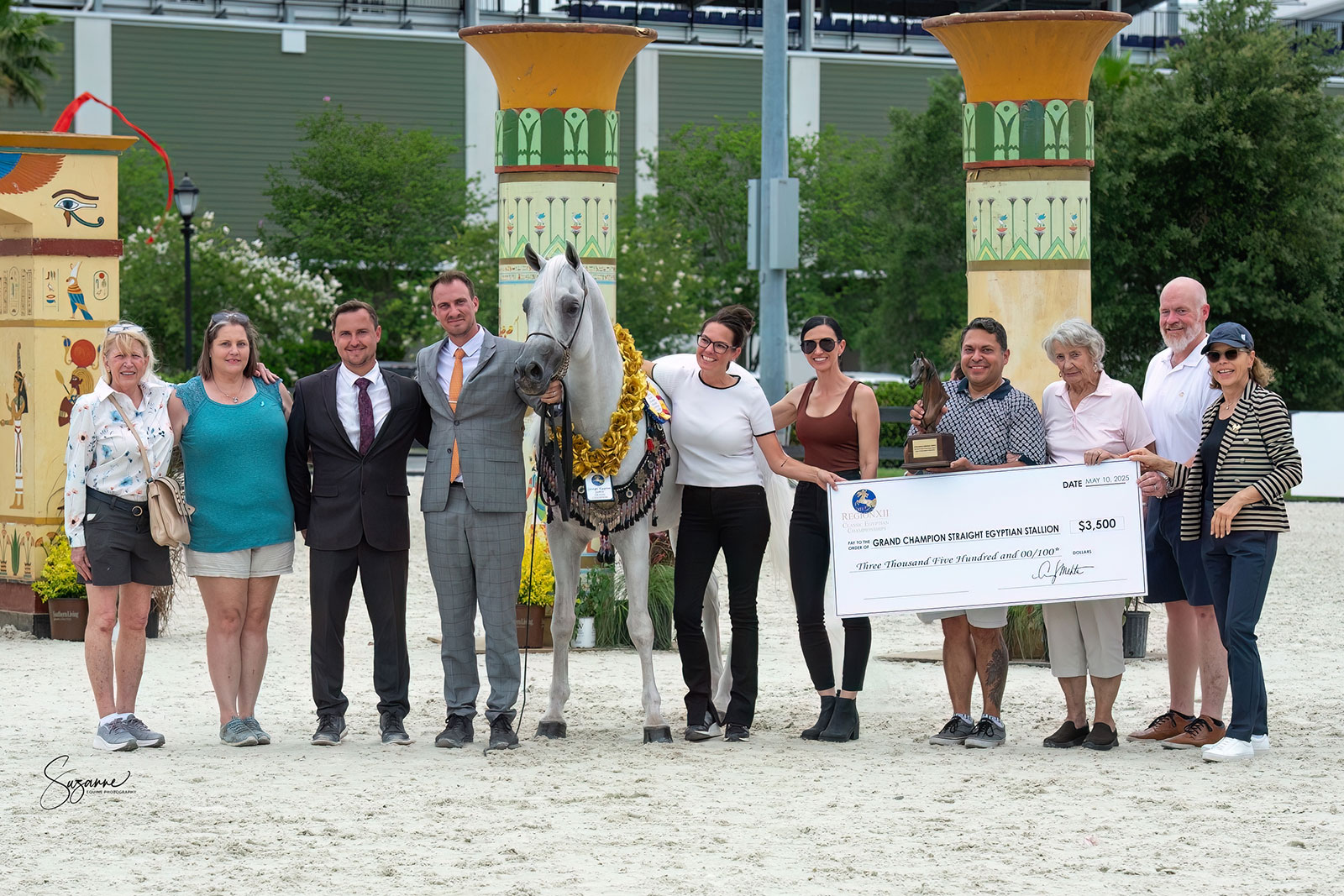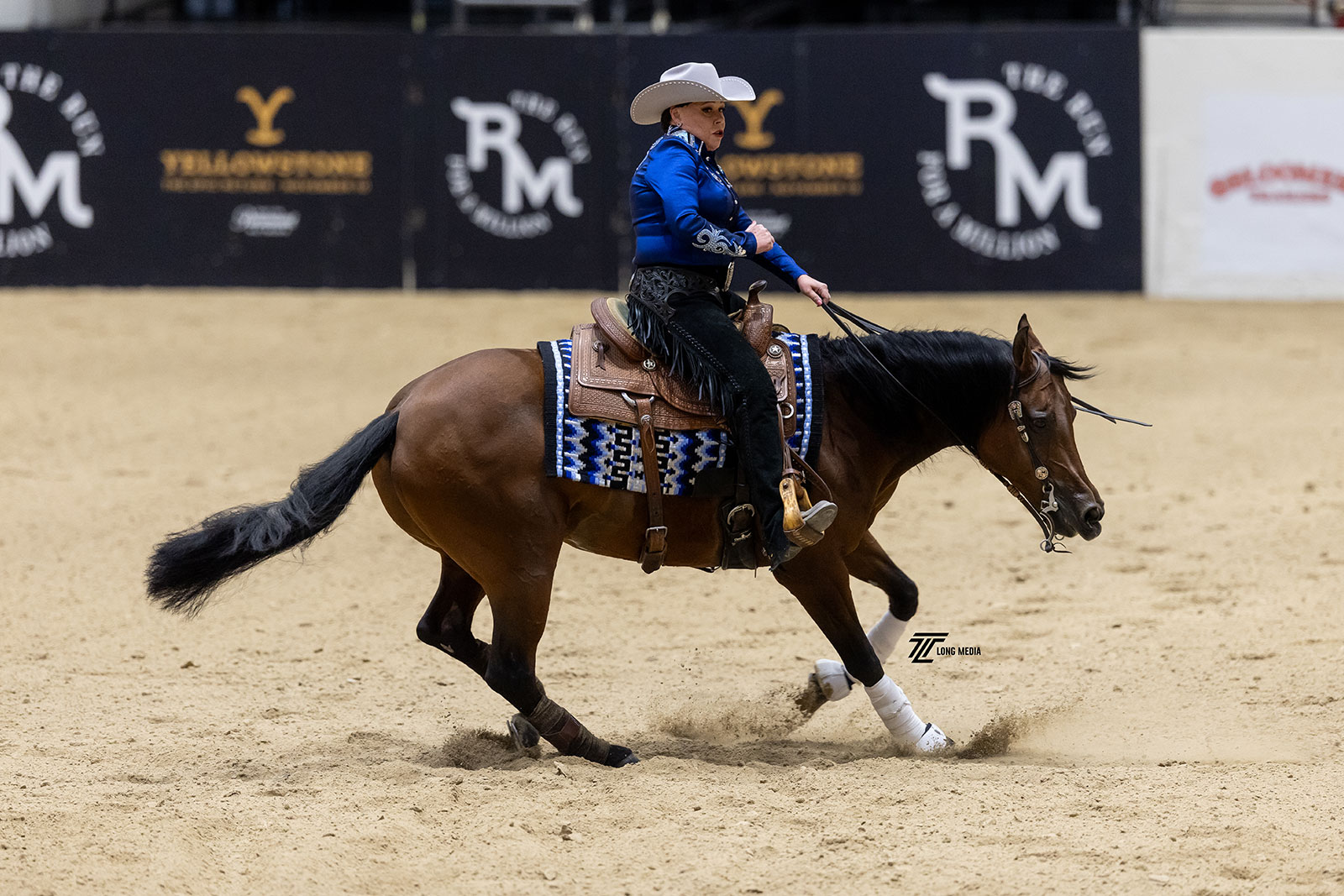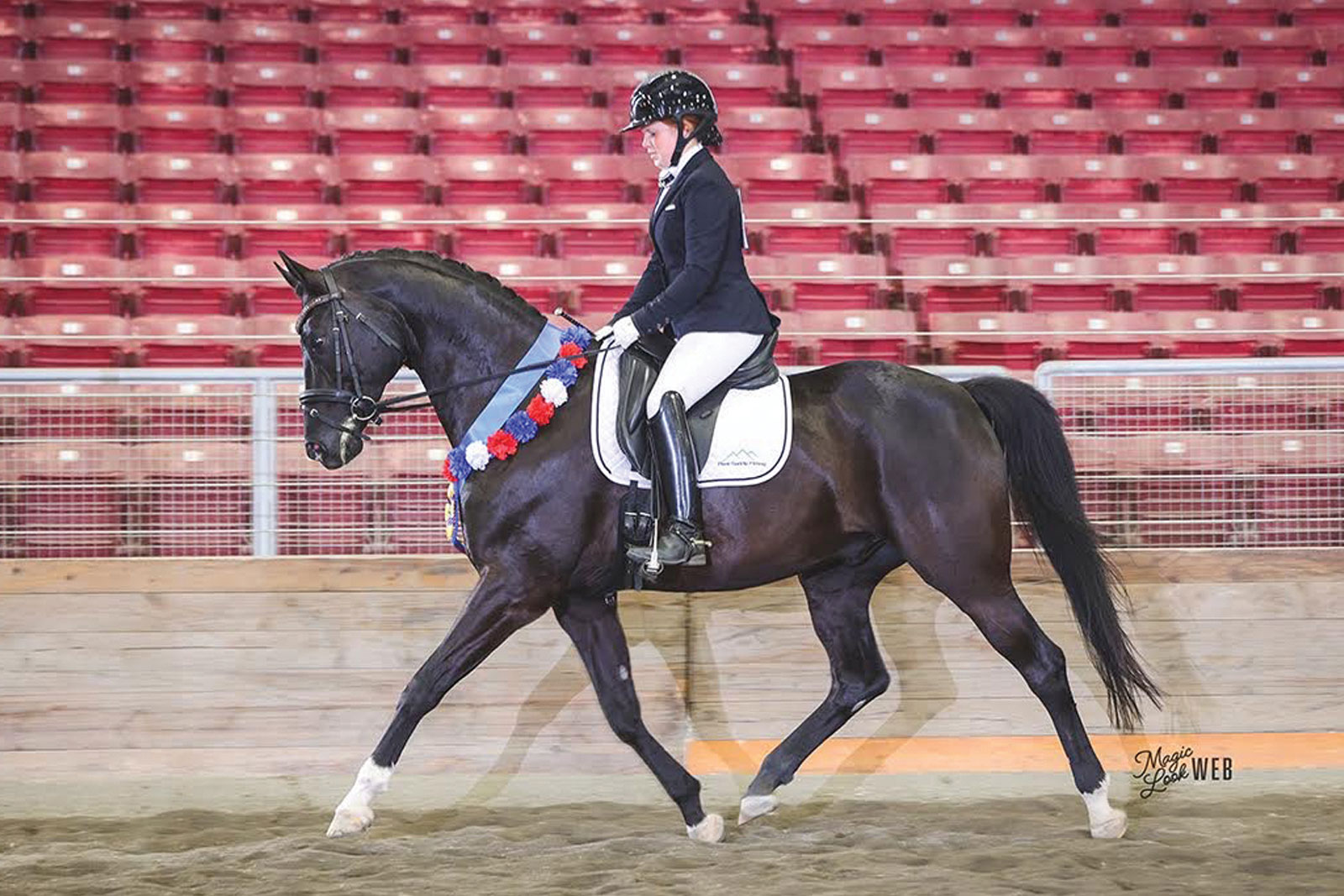Above: ES Gamal++++// and Nicole Rowley demonstrating shoulder in right in Prix St. Georges.
By Brianna York
As featured in the Winter 2025 issue of Arabian Horse World
Many people are unaware that the Dressage levels are a cohesive system intended to help you and your equine partner progress through all of the stages of training that lead to a finished Dressage horse. Even people who compete in Dressage tend to look at each level as a set of actions that need to be performed for a judge to award them a ribbon rather than as a systematic training structure.
When you view each Dressage test as a simple set of actions that need to be performed for a score, you cheat yourself out of a complete understanding of the system. Utilizing the tools of the Dressage training scale can help you understand what you and your horse need to work on at each stage of your journey.
Roadblocks in the Dressage training process can often be resolved simply by revisiting the training scale and identifying the area of weakness that is causing trouble for both you and your equine partner.
What is the Goal of the Training Scale?
If you are not sure what the goal of each level should be, you only need to look at the language at the top of each of the USDF Dressage tests. The top of the test states the purpose of the test, which calls out all of the ideals and goals that the judge will be looking for as you perform it.
What is the Goal of EACH LEVEL?
Introductory
This level is intended to introduce the horse or rider to Dressage concepts. The horse is to be ridden forward freely, and it should accept the bit. The rider will create and maintain an even tempo and cadence throughout the test, demonstrating test accuracy.
Training Level
This level indicates that the horse has established the correct foundational basics for success at the higher levels of the training scale. The horse will have a clear cadence and rhythm in its gaits and will accept contact with the bit. Lateral suppleness and softness are introduced as well. As always, correct geometry shapes and figures are expected.
First Level
At the first level, horses begin to show that they have achieved more advanced balance, suppleness, and throughness. This level also requires that the horse is on the bit and can lengthen the stride with balance and cadence.
Second Level
The second level looks for horses to transfer more weight to the hindquarters in preparation for more advanced skills in third and fourth-level tests. For this level, an increased degree of straightness and suppleness is expected, as well as improved balance in extensions, lateral movements, and the rein back. Introducing the proper rein back is foundational for pirouettes, lead changes, and square halts. This level also introduces the foundational steps for half-pass with shoulder-in and travers.
Third Level
At third level, the horse is expected to demonstrate uphill balance for the first time. Medium gaits are introduced, which demand increased gait volume and stride length without losing balance. A single lead change in each direction is also required. Harmony between rider and horse is stressed, as is a greater degree of suppleness, bending, straightness, and throughness. This level looks forward to fourth level, where tempi changes (changes made at specific intervals in the canter stride) and pirouettes are called for.
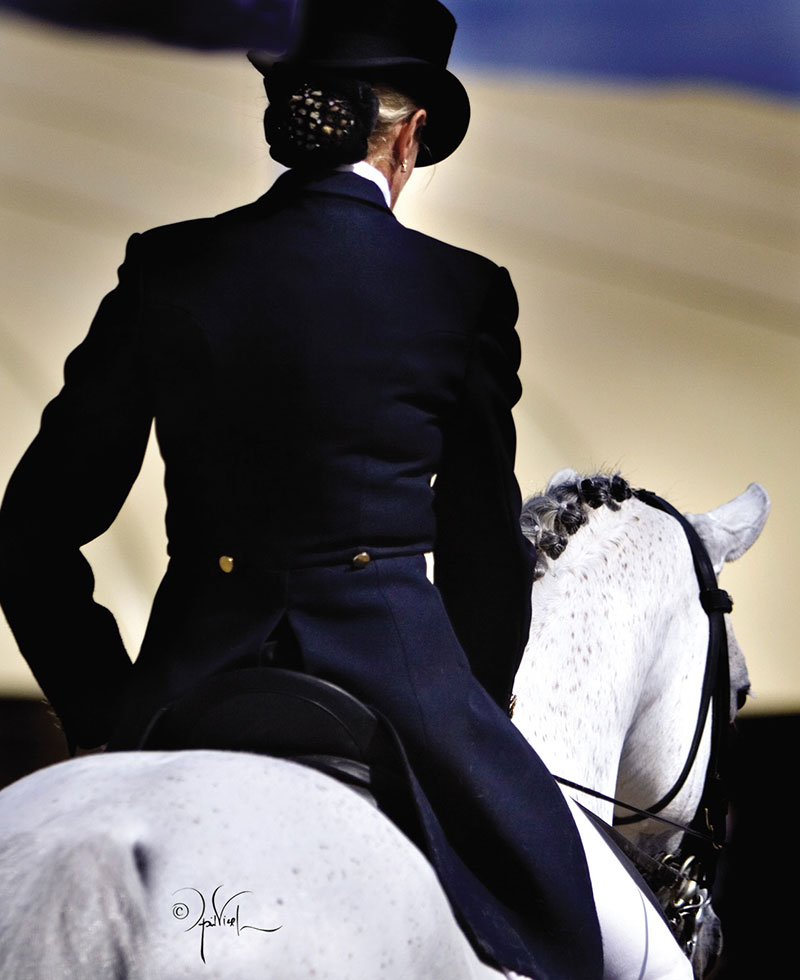
Throughness is the foundational idea behind the eventual goal of collection and the higher frame necessary for more advanced movements like lead changes.
Travers is a Dressage exercise that evaluates a horse’s ability to bend inward or outward. It’s also known as “haunches-in”.
The Dressage Training Scale is meant to help you
If you have been struggling to understand why you are not getting the scores that you expected, or you are running into issues in your daily riding, you should always revisit the training scale and its connection to the Dressage test system. This discussion should have highlighted the various goals and expectations of each of the steps of the training scale within the USDF competition tests.
Judges are taught to look for the training scale fundamentals at each level of the American and FEI training systems. You should expect comments from your judge linked with areas of the training scale that you might need to work on. Continually assess your goals and the progression of your partnership with your horse based on the goals of this ideal training process. Training a horse from the introductory level through the fourth level, or even Grand Prix, will be a much more rewarding and fun experience with the correct fundamentals in mind.
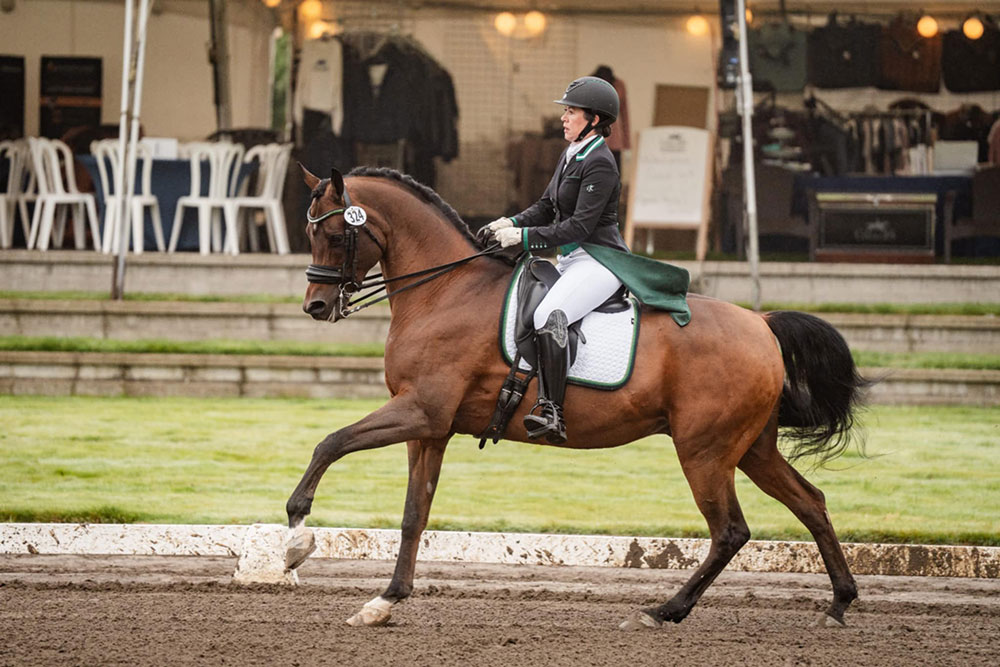
ES Gamal++++// performing flying changes every fourth stride in Prix St. Georges.
